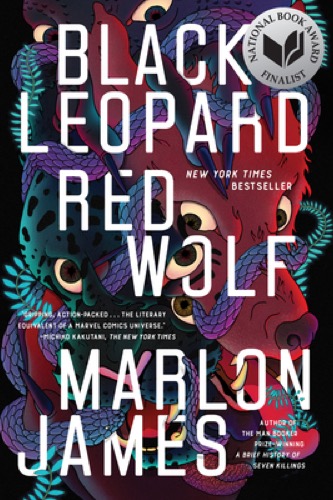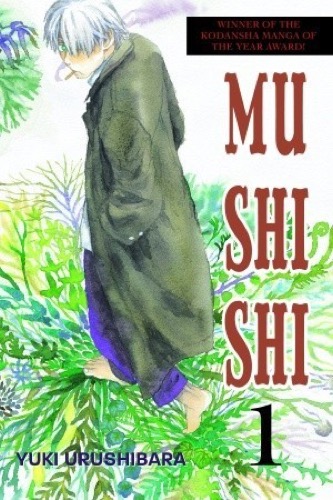
This title might be a bit of a misnomer – pretty much all fantasy is inspired by world mythology, though the rate of inspiration varies. While the literary origins of every fantasy tale can be retraced to old school epics like Gilgamesh, Beowolf, and The Odyssey, some fantasy series borrow more directly from these mythos than others. When it comes to this list, we’re looking at titles that truly copied the homework that their literary forebears worked so hard to originate. Of course, many of these tales then subvert the literary tropes of the source material, earning them a well deserved A+ on the assignment after all! So here goes, the 10 best fantasy books inspired by world myths and legends.
Circe

Madeline Miller carved out a literary name for herself with her beautiful and devastating Song of Achilles, which intimately retold the tale of love between Achilles and Patroclus that Homer only hinted at in The Iliad. With her sophomore novel Circe, Miller gives us another emotional gut punch centered around a secondary antagonist from Homer’s Odyssey – the titular witch herself. Before she began her tenure turning sailors into pigs, Circe was a bullied goddess in the court of Helios. After being banished to a desert island for taking a magical stand against a rival, Circe discovers that her god-cursed new life is actually a blessing in disguise. She’s now free to spend her immortal days pursuing the lost art of witchcraft, which, yes, culminates in her turning sailors into pigs. What The Odyssey doesn’t tell you is that many of these sailors deserved it, nor does it explain the emotional journey that led her into (and out of) Odysseus’s arms in the first place.
Spear

A retelling of the Arthurian legend, Nicola Griffith’s Spear is the story of a young woman named after a certain titular pointy stick that belonged to a group of Irish divinities. After hearing tales of King Artos’ circle-shaped table, young Peretur leaves her forest home to make a heroes’ pilgrimage to the distant land of Caer Leon – disguised as a young man. After besting one of Artos’ knights (and being rejected from the Round Table regardless) Peretur begins a tender relationship with Nimuë – the fabled Lady of the Lake herself. Nimuë reveals that Artos’ wizardly advisor Myrddyn (don’t ask me how to pronounce it) is plotting to install the king as an imperial ruler, whose descendants will subjugate the land for centuries to come. Not on Peretur’s watch.
The Daughter of the Moon Goddess

A restitching of a tapestry of Chinese mythology, The Daughter of the Moon Goddess is the story of the titular lunar baby who is the daughter of a goddess exiled from the court of the Celestial Emperor. Xingyin grows up on the moon in secret, shielded by her mother Chang’e from the Emperor’s far-seeing eye. Nevertheless, the Emperor catches a glimpse of an unsnipped loose end after Xingyin’s magic begins to brightly manifest itself, and the immortal is forced to flee from her home in order to save herself from imperial wrath. Unfriended and alone in the Celestial Kingdom, Xingyin blends in with the masses in order to buy time until she can figure out a plan to save her mom. Maybe her decision to take archery classes with the Emperor’s son will help? Wouldn’t by my first choice, but you gotta start somewhere, even if it’s right under your enemy’s nose.
Black Leopard, Red Wolf

Inspired by the myths and legends of Africa, Marlon James’ Black Leopard, Red Wolf is the story of a tracker named, well, Tracker, who is renowned for his keen hunting abilities. He’s hired by to find an unusual quarry – a boy who went missing three years prior. Told as a confessional from the hunter from the depths of a prison cell, Black Leopard, Red Wolf relies on a refreshingly unusual literary convention in order to weave a complex narrative – a fractured and disjointed history of a man who set out with a simple goal in mind, only to become twisted up in a web of nightmares beyond his imagination. What kind of nightmares? Oh, nothing too scary – just child-killing monsters, haunted moon witches, and a vampiric creature that turns its victims into lightning zombies – not shocking at all.
The Witch’s Heart

A retelling of Norse myth from the perspective of one of its lesser known characters, The Witch’s Heart is the story of Angrboda – a giantess who is traditionally regarded as the lover of Loki and the mother of the giant wolf Fenrir. While this legendary jotunn sounds like an unkillable badass, Genevieve Gornichec’s novel begins with Angrboda at her most vulnerable. Fresh from being condemned to burn for witchcraft by Odin, the injured heroine limps off into the forest in order to heal – and falls straight into the arms of the famous trickster god himself. Loki and Angrboda’s relationship is cautious at first, but a slow blooming love results in the birth of three magical children – whose parents vow to keep them safe from Odin’s prying eyes. Ahem. Eye. He exchanged one of his peepers for forbidden knowledge, and now he’s set the other on a witch that he thought he dealt with long ago.
Mushishi

While novels about Japanese mythology are relatively few and far between, manga is rife with references to the country’s traditional folklore. While genre stalwarts like Naruto and Inuyasha are famous for their mythological references, Yuki Urushibara’s Mushishi is a lesser known but equally impactful work that subverts Shinto tradition. The story centers around a wandering “Mushi Master” known as Ginko – a man with vast knowledge of the bizarre spirits that inhabit the land. While many Mushi are harmless, man’s encroachment into the natural world has caused Mushi to adapt themselves to deal with humanity – with often disastrous results. What happens when a snail-like spirit that eat sound abandons waterfall caves to live in a human ear instead? What happens when a spirit that lives in the shadow of trees takes up residence in the darkness inside a human skull, and begins feeding on the victim’s memories? Call a Mushi Master, any other doctor is sure to be out of their depth.
The City of Brass

Inspired by the One Thousand and One Nights – a collection of Arabic folktales from the Golden Age of Islam – S.A. Chakraborty’s The City of Brass is the story of the mythical city of djinn. Well, not initially. The story begins in the un-mythical city of Cairo, where young Nahri makes a living swindling Ottoman nobles with phony palm readings and spirit summonings. After one of Nahri’s sham ceremonies ends up summoning a very real djinn, the spirit informs her that she hails from an ancient and magical bloodline that once ruled fabled City of Brass. After a trek across the desert, Nahri and her djinn arrive in the city to claim her birthright – but the politically scheming spirits in power aren’t too keen on a newcomer attempting to muscle in on their turf. Nevertheless, Nahri will keep on flexing anyway.
Grendel

A retelling of Beowulf from the point of view of one of its monsters, John Gardner’s Grendel is a complete subversion of the fantasy genre. It’s a cynical and darkly hilarious tale of a monstrous loner looking for his place in the world, which he attempts to find by wandering the wilderness and devouring Vikings. Grendel’s search for existential meaning is squandered by the nihilistic musings of an omniscient dragon, who informs the monster that nothing matters in this life – so might as well just kill, brood, and sit on a pile of gold. It’s a tale about the making of a monster, how both nature and nurture (or lack thereof) combine to create one of fantasy literature’s most infamous antagonists. Poor Grendel, all he wanted was to be loved.
The Jasmine Throne

Inspired by Indian mythology, Tasha Suri’s The Jasmine Throne is the story of an exiled princess rise to reclaim an empire. After being imprisoned by her power hungry brother’s regime, Princess Malini is seemingly condemned to spend her days rotting within the walls of a similarly decaying temple in the wilderness. Everything changes when she meets Priya, a temple servant who possesses a secret magic thought to have been lost long ago. Initially suspicious at first, the pair use each other to their mutual advantage in a quest to escape the temple and undo the destruction that the empire has caused – only to fall in mutual love after springing loose. Their slow burn romance kindles a revolutionary fire capable of burning down a kingdom, one that they intend to rebuild from the ashes.
The Bear and The Nightingale

Inspired by Russian folklore, Katherine Arden’s The Bear and The Nightingale is the story of a peasant girl named Vasilisa – who is able to see a world that the Orthodox Church would rather keep hidden. Vasilisa is able to commune with the spirits of the Russian wilderness, honoring them in exchange for the safety of her small farming village. After her father’s new wife forbids her from her spiritual practices, misfortune begins to fall upon Vasiliya’s home, due in no small part to the rising power of a bear spirit working towards its own deathly ends. Luckily, Vasiliya second sight has brought her a glimpse of the bear spirit’s brother, a frost demon whose chilly exterior hides a warm heart. Ice cold animosity soon heats up into mutual longing as the pair work together to save the land from the threat of an endless winter – which they hope to stave off with the summer of their love.
Have a tip we should know? [email protected]







